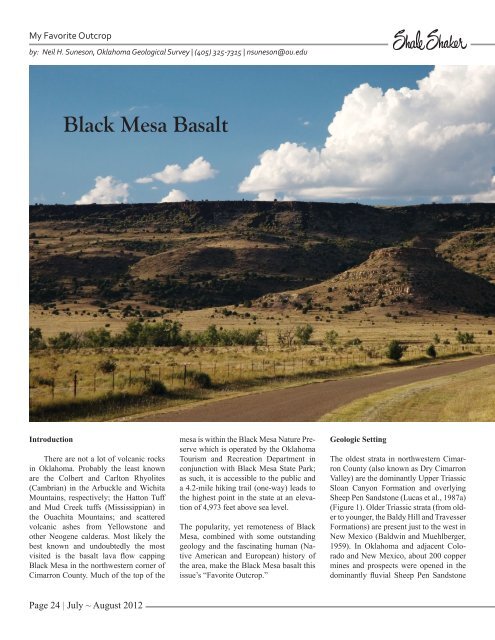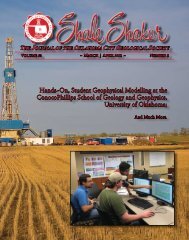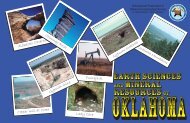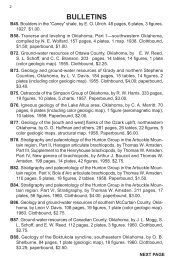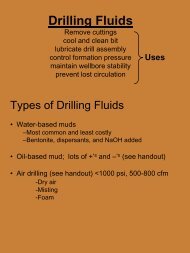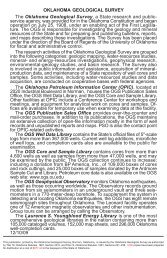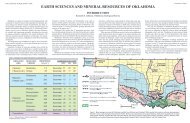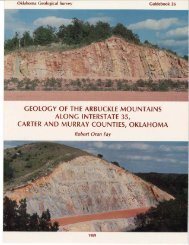Black Mesa Basalt - Oklahoma Geological Survey
Black Mesa Basalt - Oklahoma Geological Survey
Black Mesa Basalt - Oklahoma Geological Survey
Create successful ePaper yourself
Turn your PDF publications into a flip-book with our unique Google optimized e-Paper software.
My Favorite Outcrop<br />
by: Neil H. Suneson, <strong>Oklahoma</strong> <strong>Geological</strong> <strong>Survey</strong> | (405) 325-7315 | nsuneson@ou.edu<br />
<strong>Black</strong> <strong>Mesa</strong> <strong>Basalt</strong><br />
Introduction<br />
There are not a lot of volcanic rocks<br />
in <strong>Oklahoma</strong>. Probably the least known<br />
are the Colbert and Carlton Rhyolites<br />
(Cambrian) in the Arbuckle and Wichita<br />
Mountains, respectively; the Hatton Tuff<br />
and Mud Creek tuffs (Mississippian) in<br />
the Ouachita Mountains; and scattered<br />
volcanic ashes from Yellowstone and<br />
other Neogene calderas. Most likely the<br />
best known and undoubtedly the most<br />
visited is the basalt lava flow capping<br />
<strong>Black</strong> <strong>Mesa</strong> in the northwestern corner of<br />
Cimarron County. Much of the top of the<br />
mesa is within the <strong>Black</strong> <strong>Mesa</strong> Nature Preserve<br />
which is operated by the <strong>Oklahoma</strong><br />
Tourism and Recreation Department in<br />
conjunction with <strong>Black</strong> <strong>Mesa</strong> State Park;<br />
as such, it is accessible to the public and<br />
a 4.2-mile hiking trail (one-way) leads to<br />
the highest point in the state at an elevation<br />
of 4,973 feet above sea level.<br />
The popularity, yet remoteness of <strong>Black</strong><br />
<strong>Mesa</strong>, combined with some outstanding<br />
geology and the fascinating human (Native<br />
American and European) history of<br />
the area, make the <strong>Black</strong> <strong>Mesa</strong> basalt this<br />
issue’s “Favorite Outcrop.”<br />
Geologic Setting<br />
The oldest strata in northwestern Cimarron<br />
County (also known as Dry Cimarron<br />
Valley) are the dominantly Upper Triassic<br />
Sloan Canyon Formation and overlying<br />
Sheep Pen Sandstone (Lucas et al., 1987a)<br />
(Figure 1). Older Triassic strata (from older<br />
to younger, the Baldy Hill and Travesser<br />
Formations) are present just to the west in<br />
New Mexico (Baldwin and Muehlberger,<br />
1959). In <strong>Oklahoma</strong> and adjacent Colorado<br />
and New Mexico, about 200 copper<br />
mines and prospects were opened in the<br />
dominantly fluvial Sheep Pen Sandstone<br />
Page 24 | July ~ August 2012


